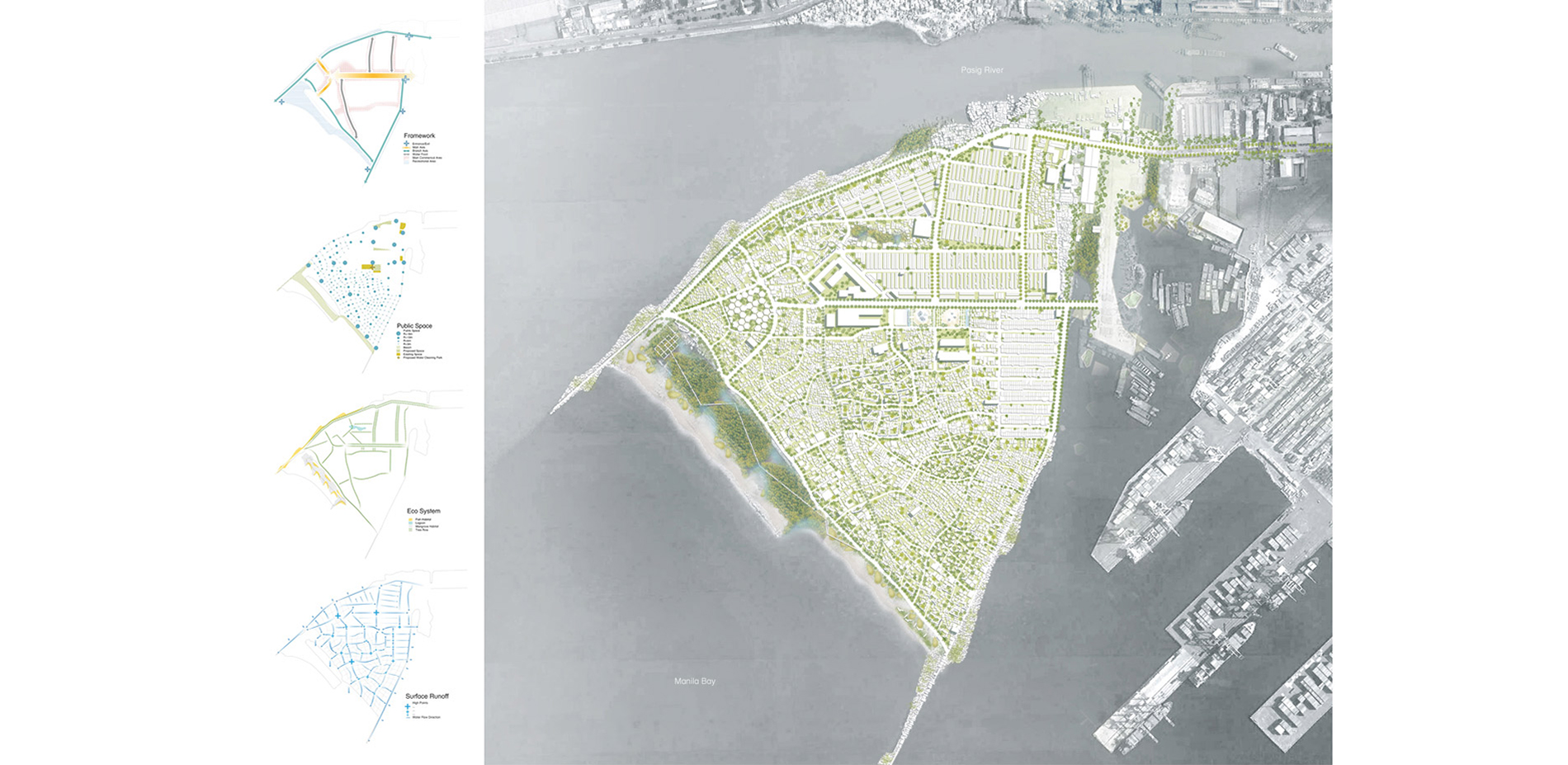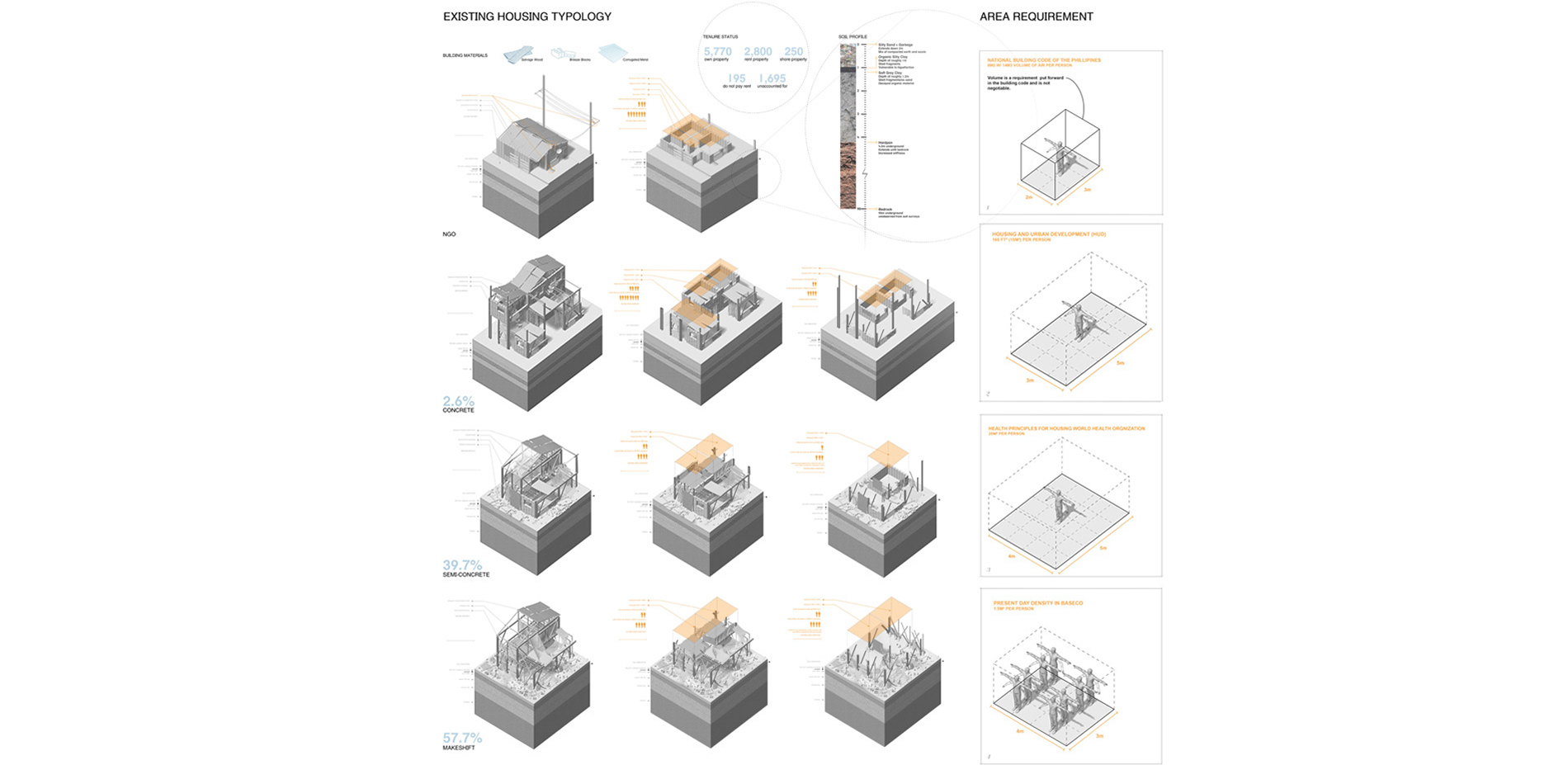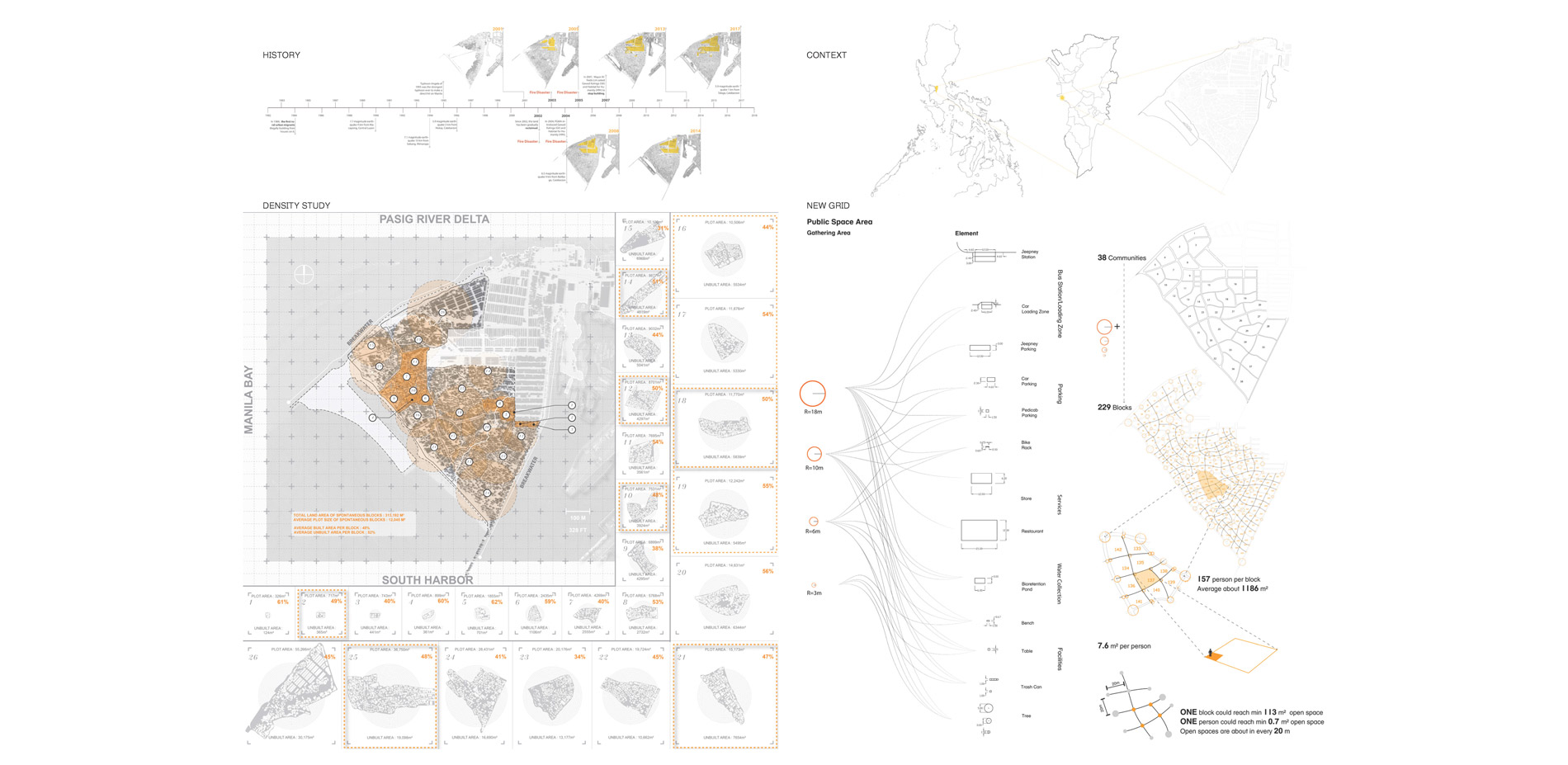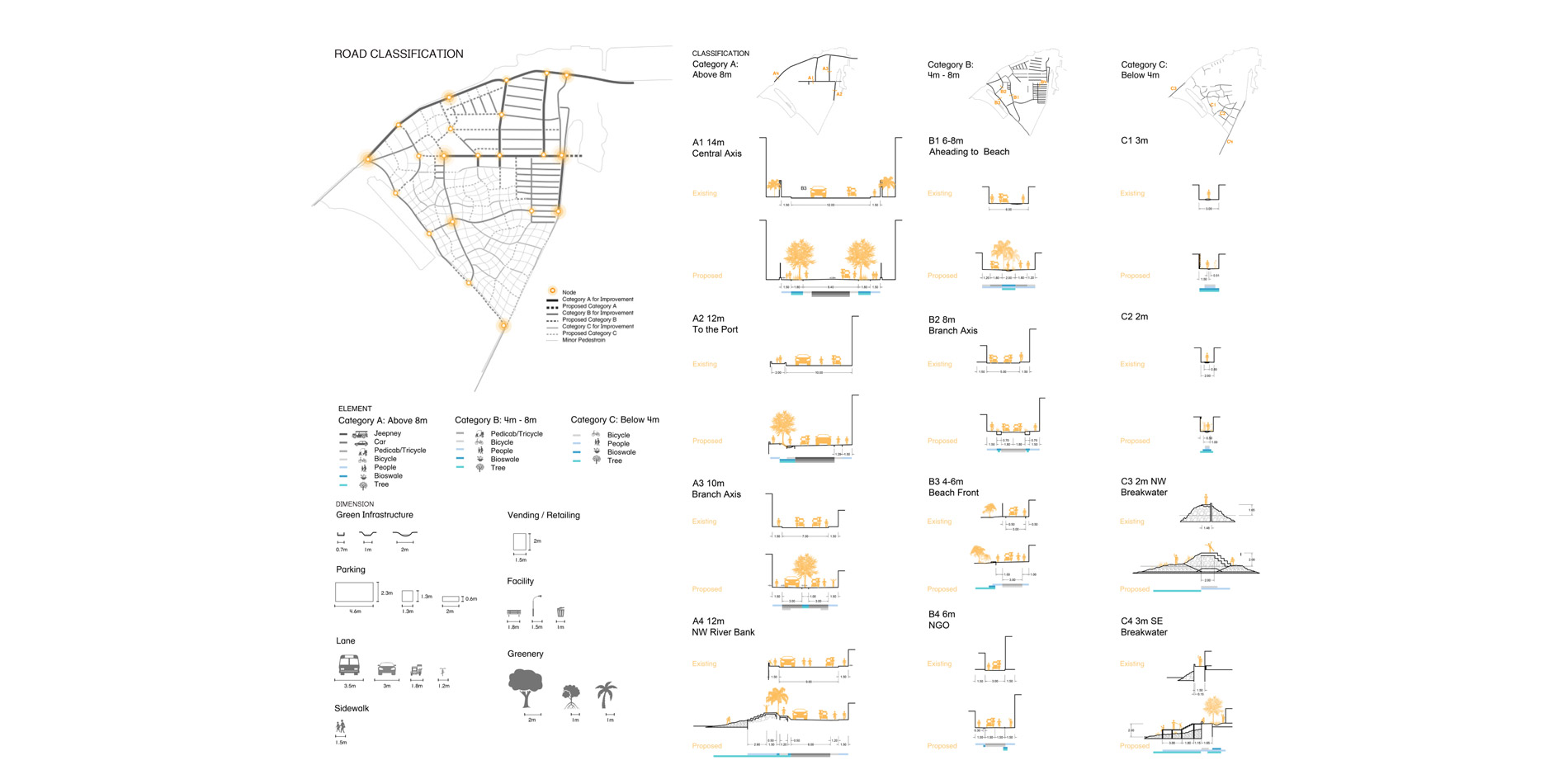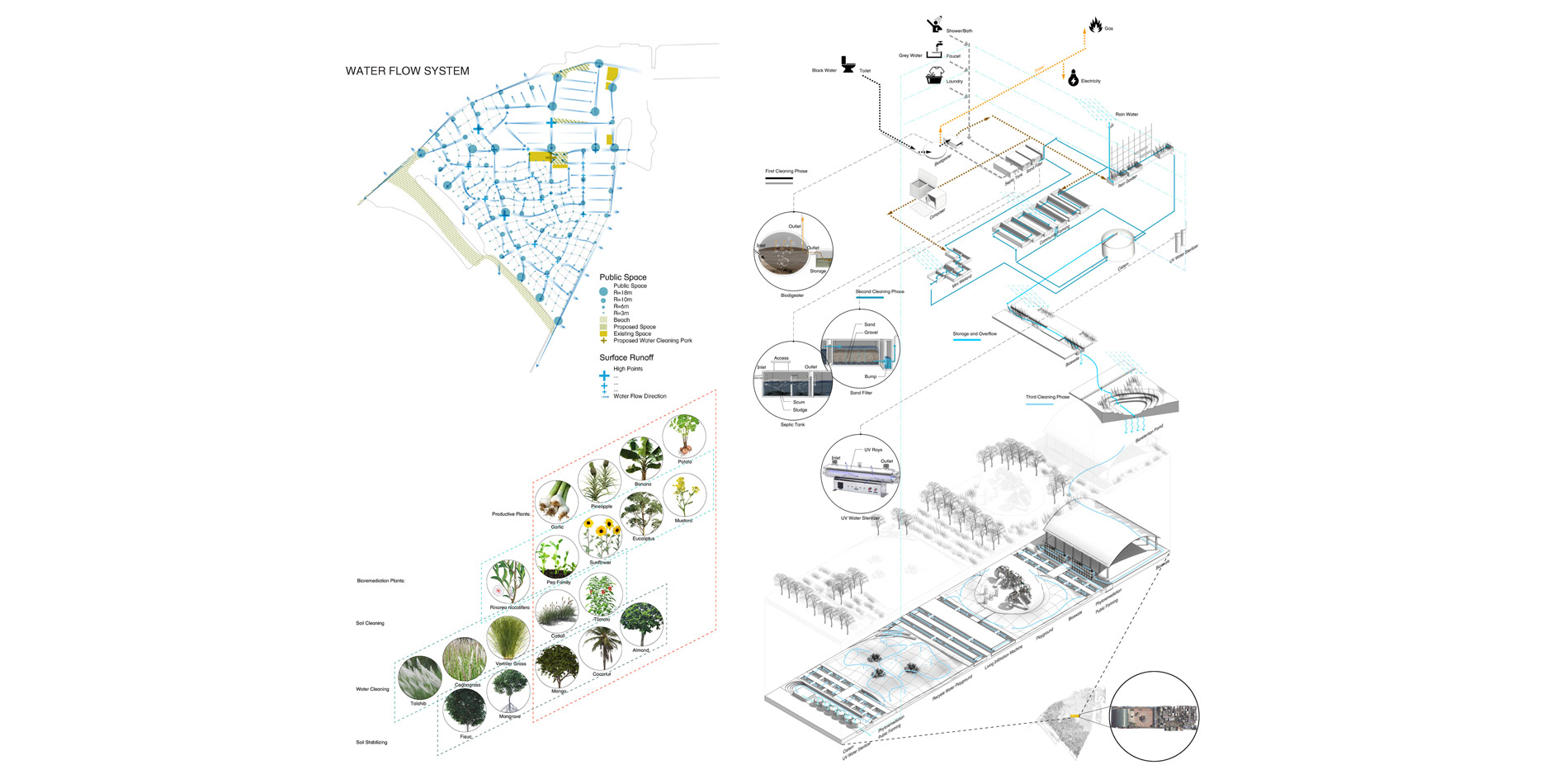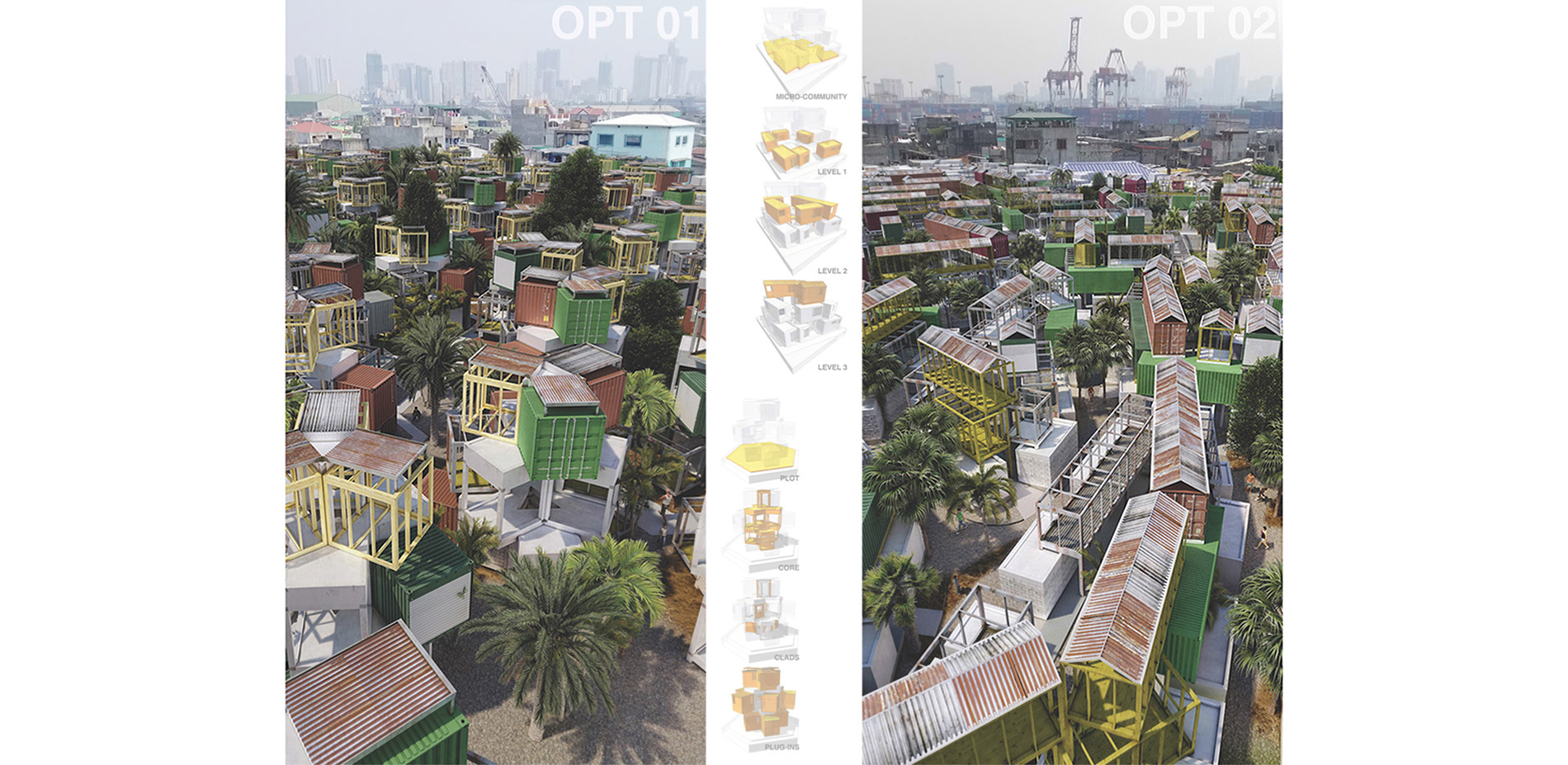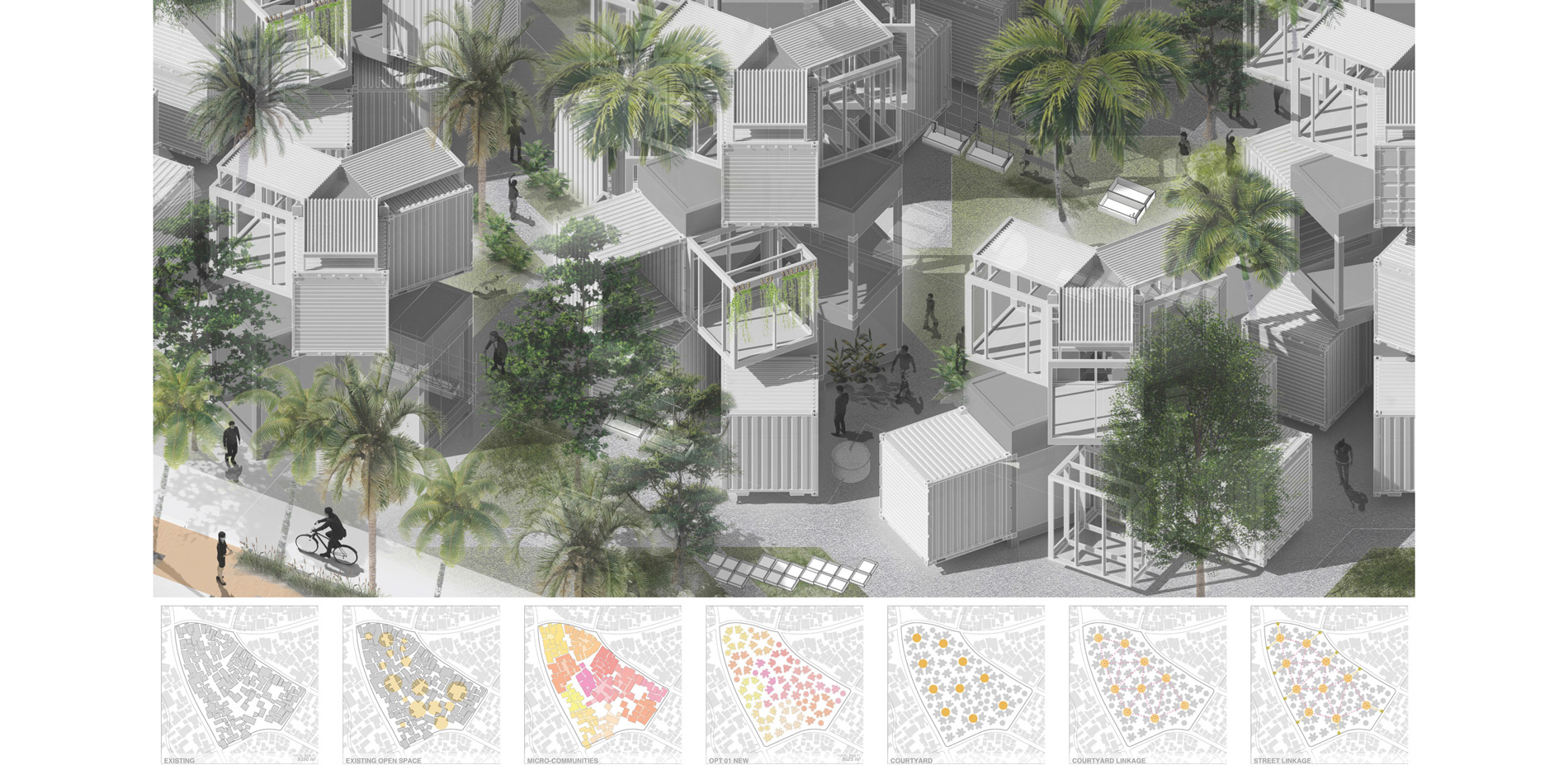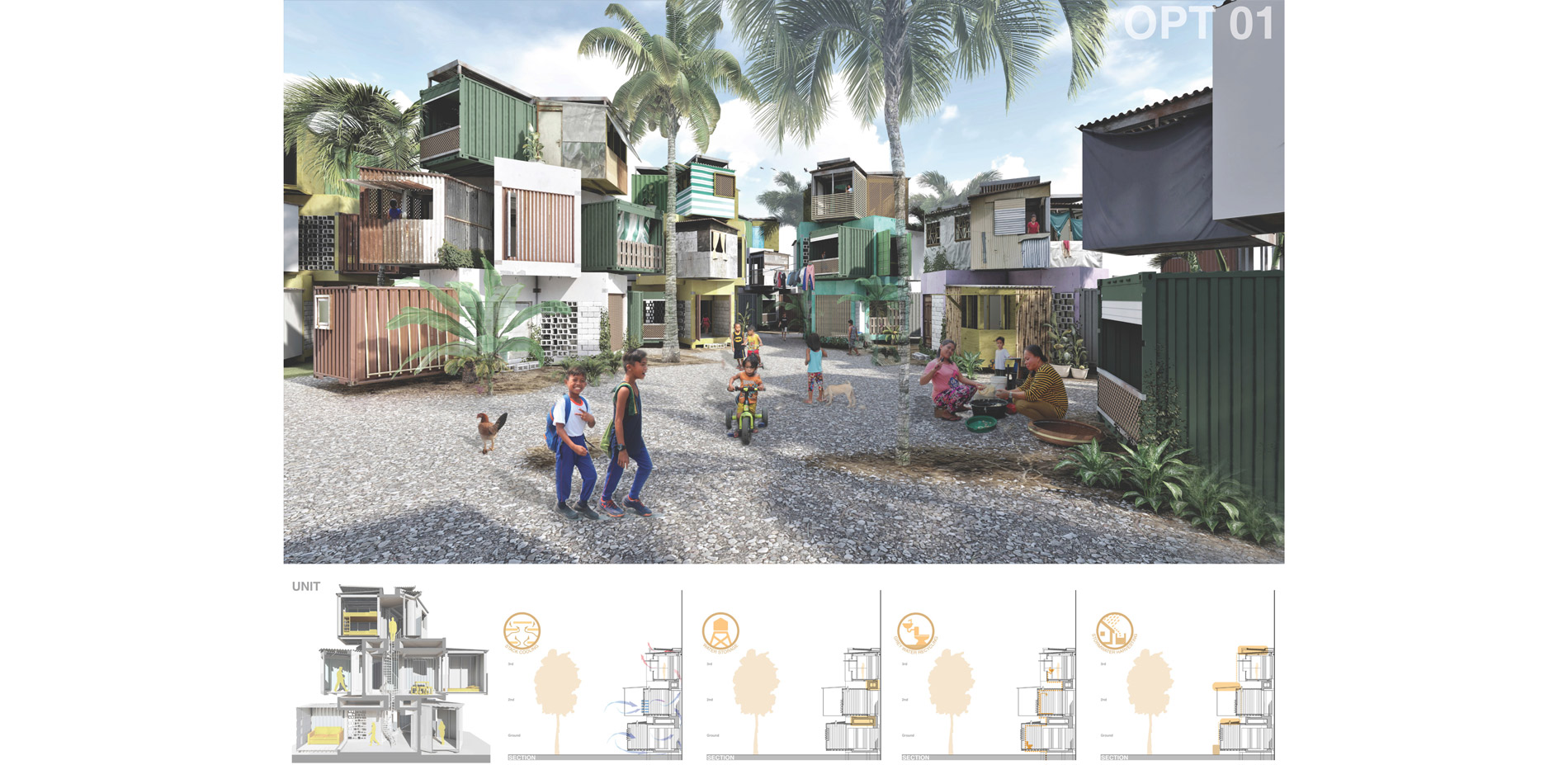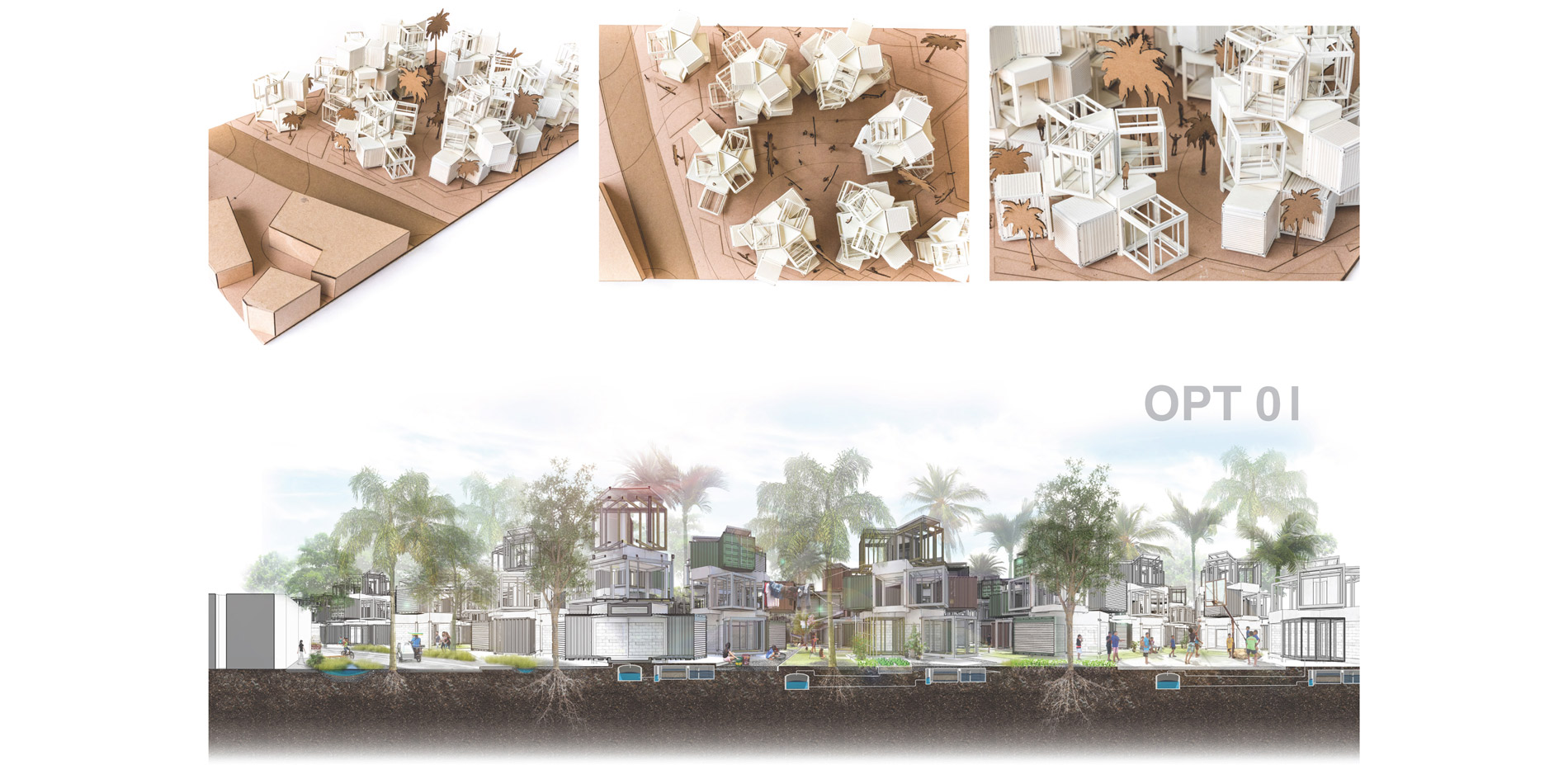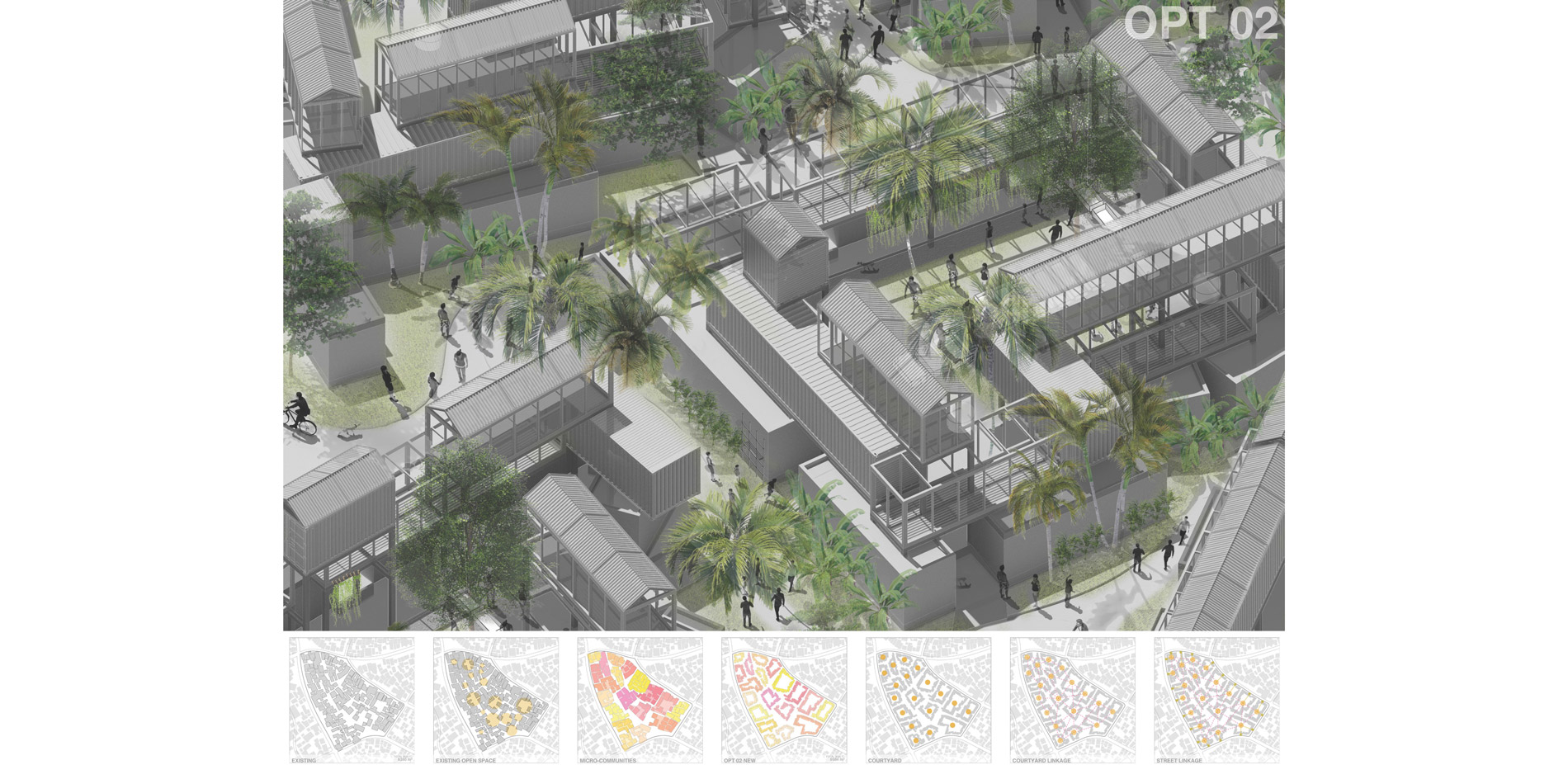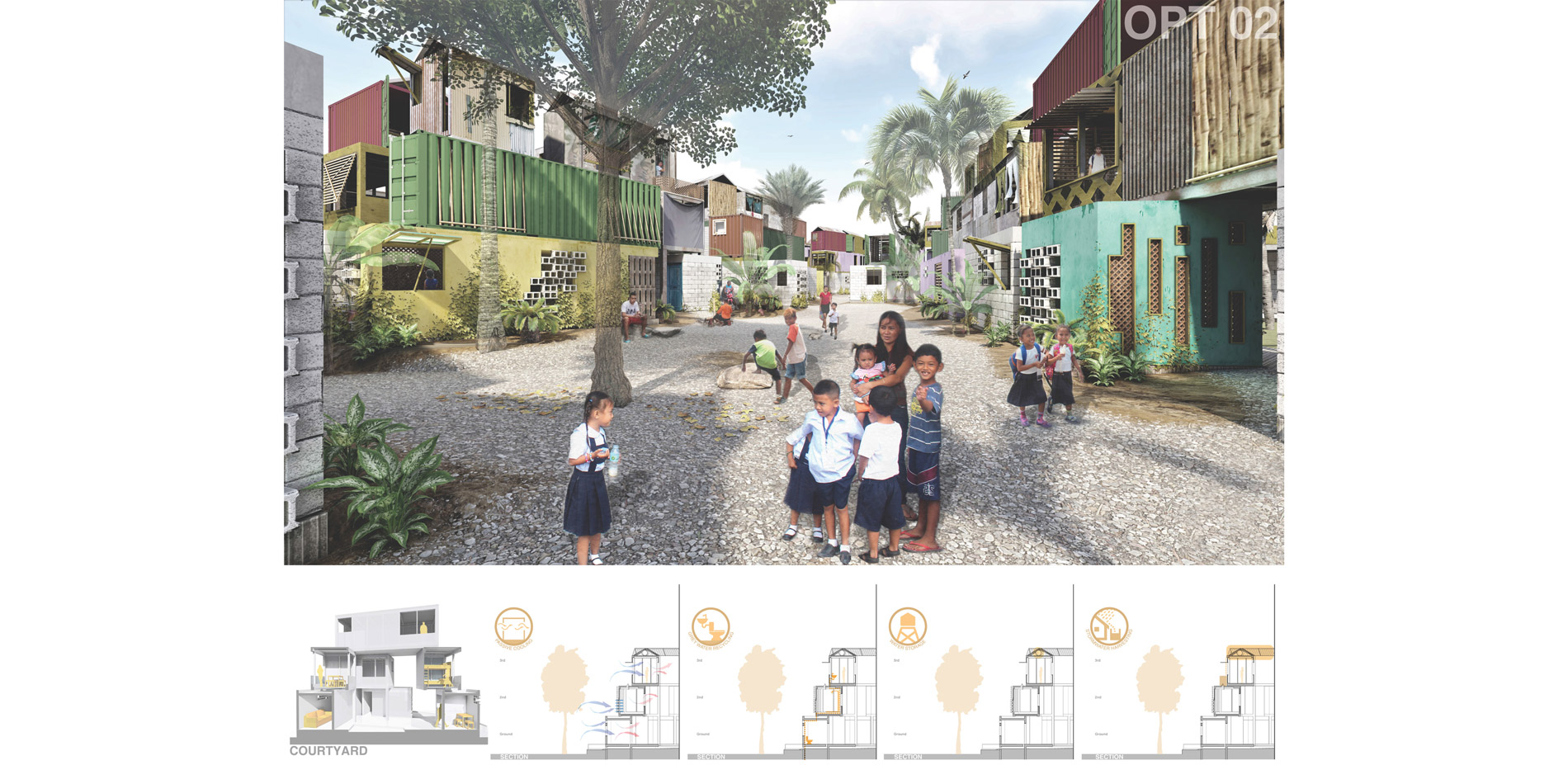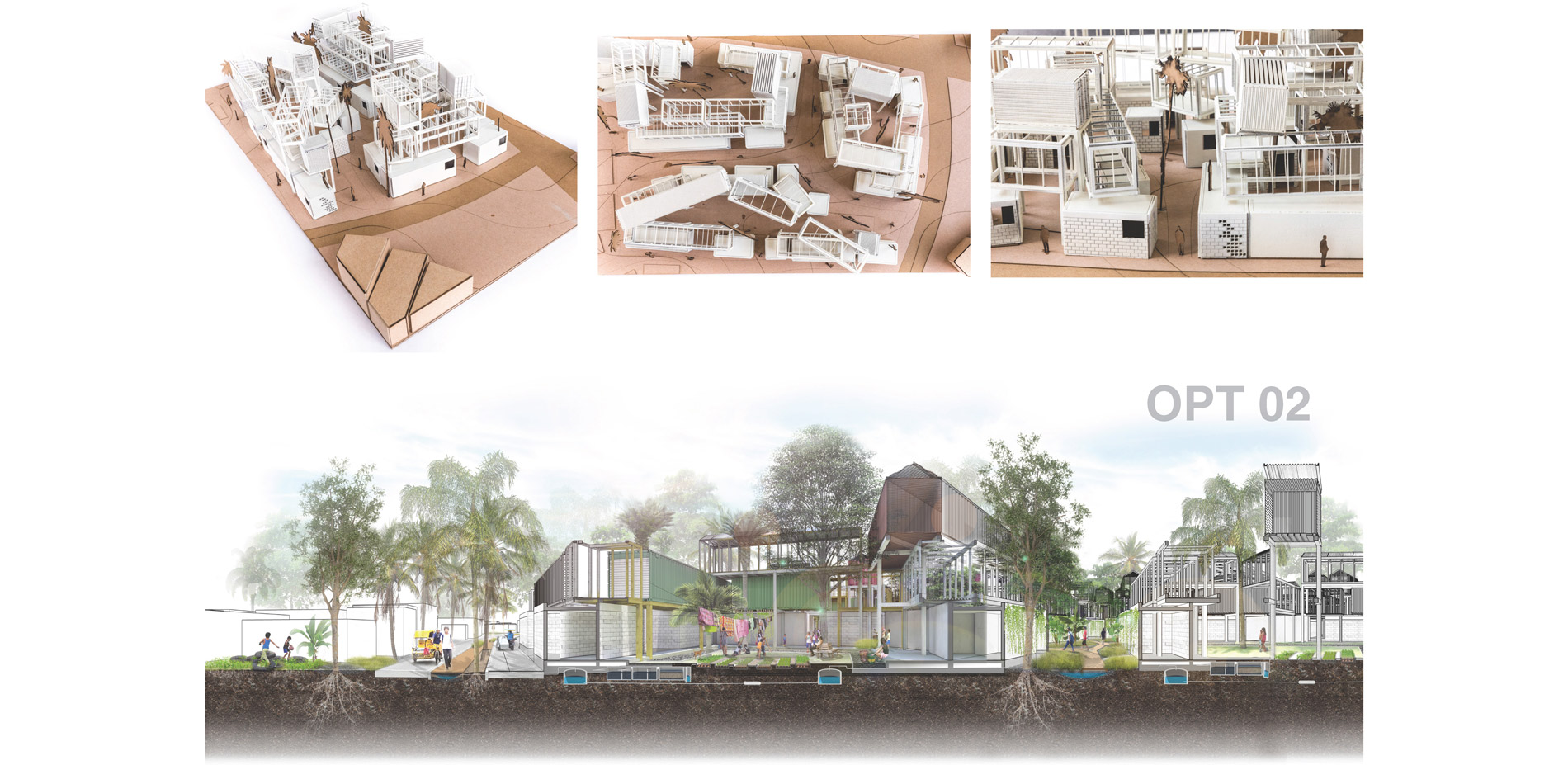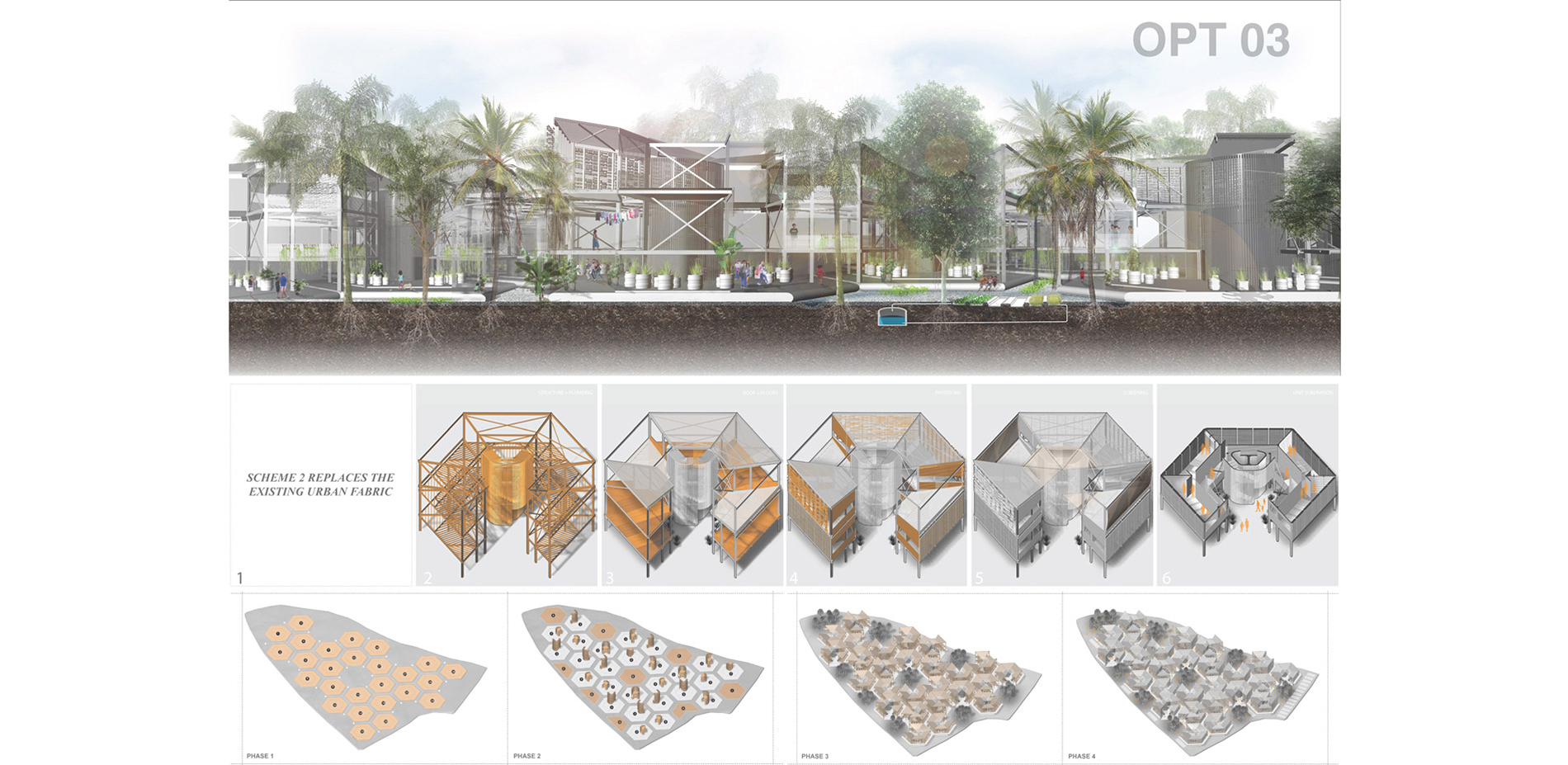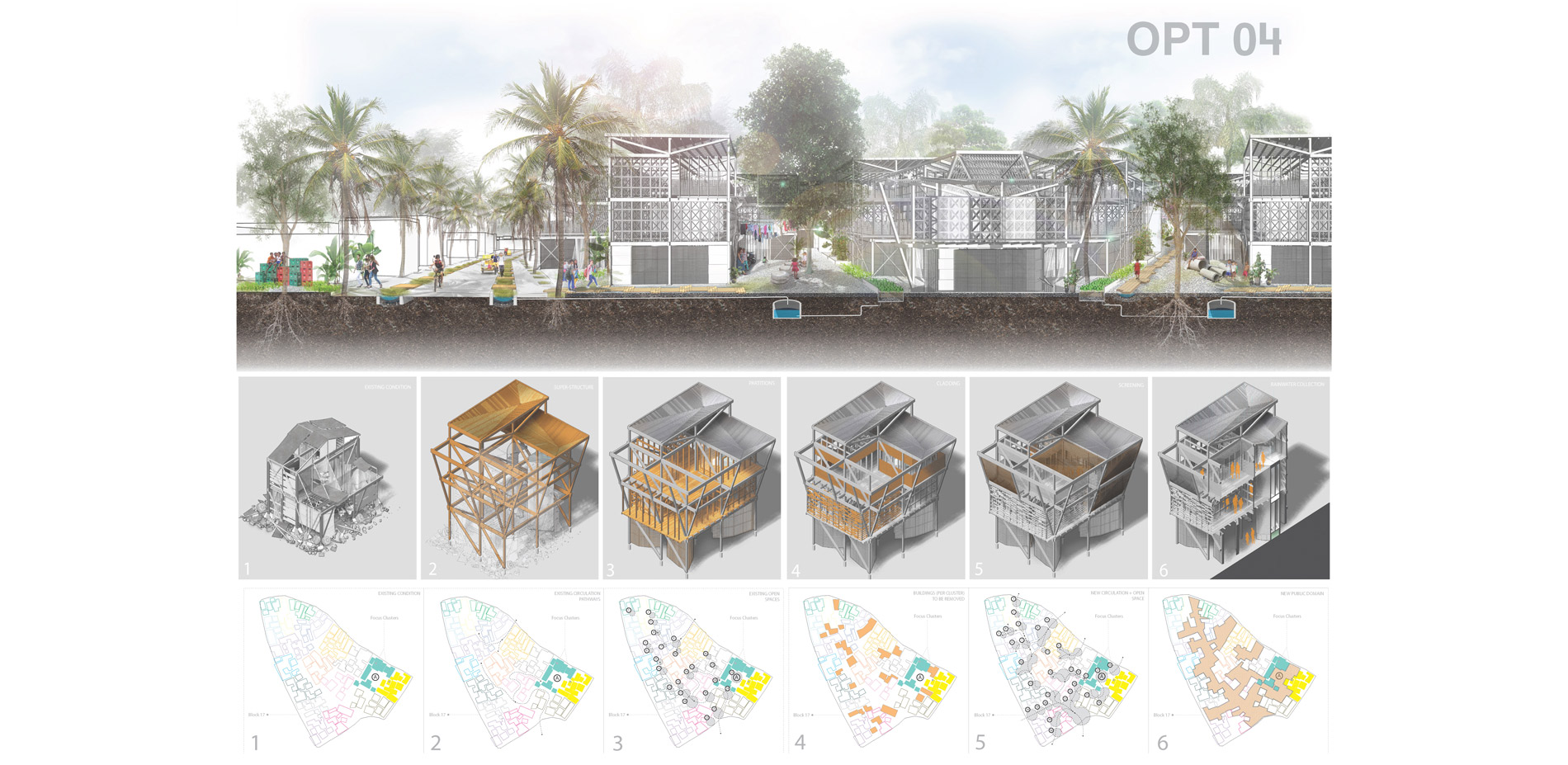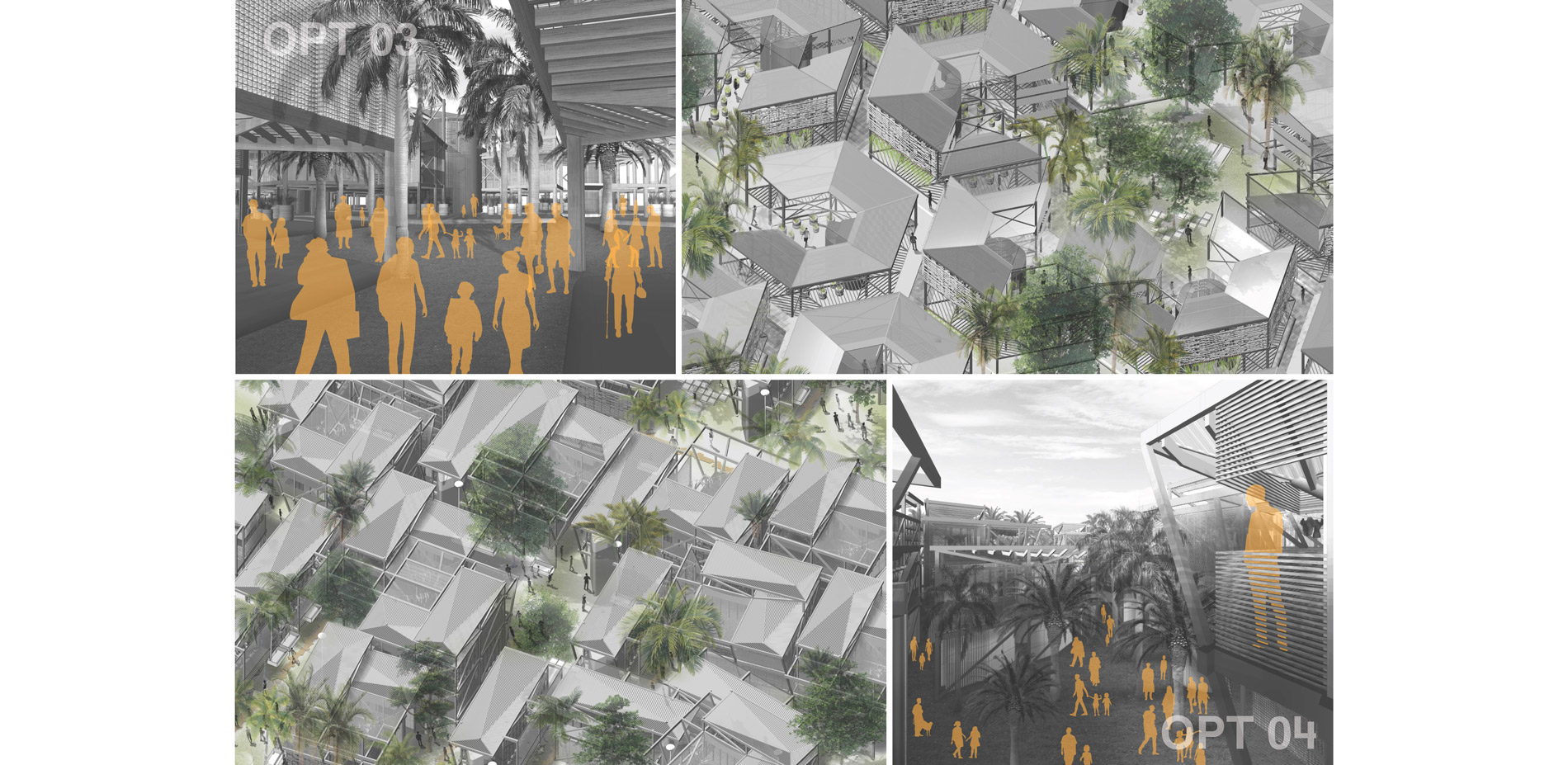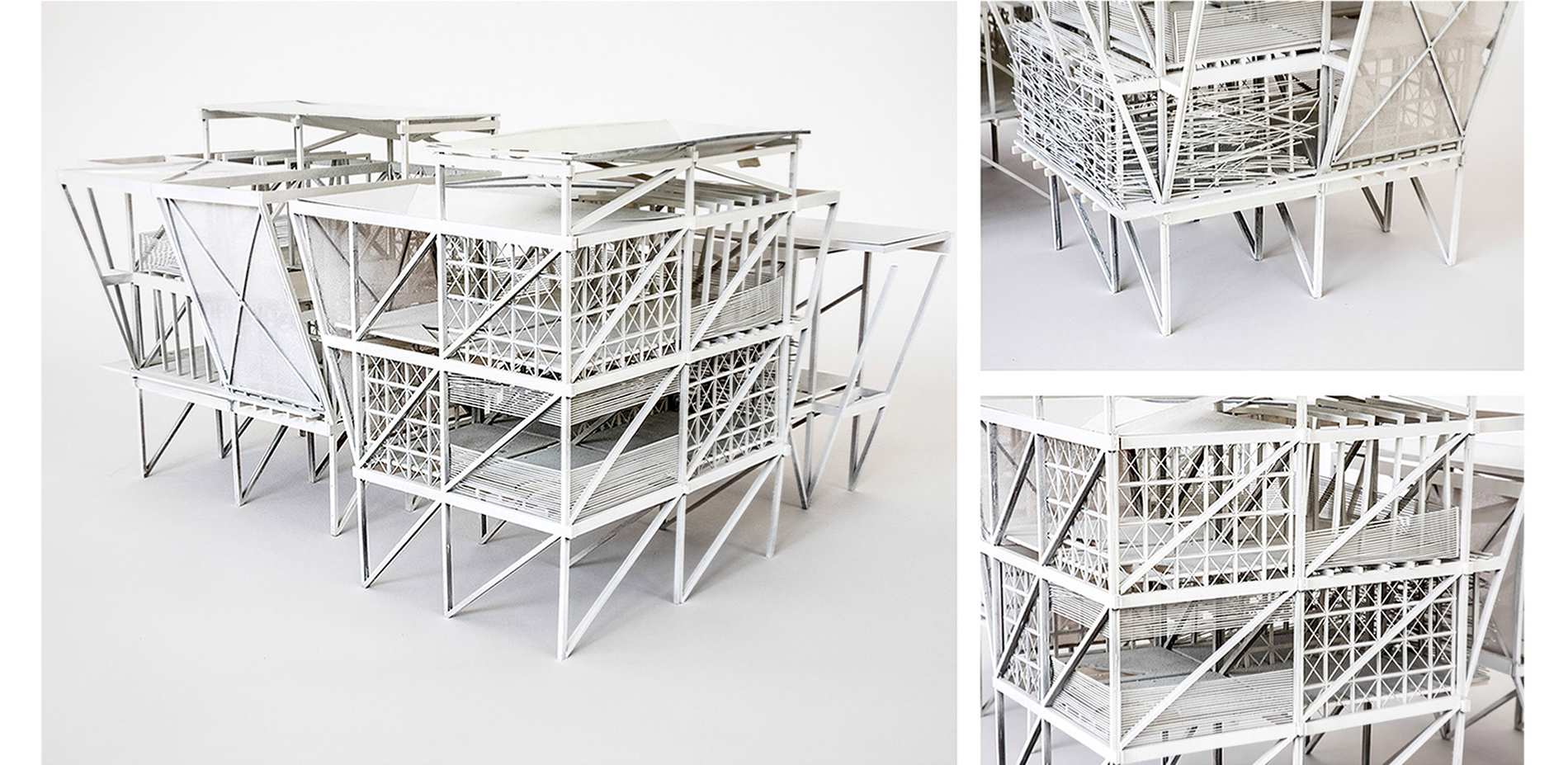Baseco: A New Housing Paradigm
AWARD OF EXCELLENCE
Residential Design
Manila, Philippines | Team: Julio F. Torres Santana, Student ASLA; Yinan Liu, Student ASLA; Aime Vailes-Macarie | Faculty Advisors: David A. Rubin, ASLA
Harvard University Graduate School of Design
It’s serious, respectful, and leaves the public space so the people can own it.
- 2018 Awards Jury
PROJECT CREDITS
- Spela Videcnik - Faculty Advisor
- Rok Oman - Faculty Advisor
PROJECT STATEMENT
Upon our site selection and during the first week of study, we were responsible for a rigorous research into the community of Baseco in Manila, the Philippines, including history, population diversity, ecological systems, culture, commerce and economics, among other influencing factors that could inform our design decisions through the course of this project. The initial investigation was followed by a site visit and participation along with workshops with members of the Baseco community and a forum with influential civic leaders within the region. Afterwards, we shared our initial findings on the city and the region, and engaged in dialogue with both leaders and community members. Our proposals connect form with space, interiors with landscape, consider climate, vegetation and sea level rise, and create sustainable ecologically sensitive habitations considering technologies focusing on material reuse.
PROJECT NARRATIVE
The city of Manila has often been described as a reflection of one's state of mind, and a place of extreme contrast that can easily become an intense personal experience. If this is indeed the case, wherever Manila is organized, clean and beautiful, some people may consider that the other side to that coin would be the Baseco compound. Technically a community that emerged out of thin air, Baseco is a manmade 52 hectares island currently housing over 60,000 rural migrants, often referred to as informal settlers, that came to the urban center of the developing Manila looking to benefit from the urban economic boom but became part of a marginalized and neglected community that is only connected to the city of Manila by one narrow road. This was my most perceivable narrative or reading of the capital of the Philippines, during our site visiting trip in early September. Already having an idea of what kind of challenges where upon, found on research former to the trip, the immediate reaction was to address and contest socioeconomically division often suffered by communities like Baseco, where hostile living conditions and city policies tend to advocate for displacement and unsensitive redevelopment. The fact that Baseco was proclaimed as District 649 of Manila, by President Gloria Macapagal Arroyo, declaring it open for disposition to actual residents of the community in January 18, 2002, after a fire on the Northwest corner, destroyed 242 homes. This unfortunate event helped speed things up in terms of declaring that the 52 Hectares of land in Baseco be awarded to actual residents. Although it will probably take some time until this offered by the government is finally honored, news like this helped to reinforce a design approach of inclusiveness and life improvement that is filled with character, flexibility and reflective of a high level of cultural sensitivity.
After visiting and being in close contact with various members of the community, many things became even clearer, while others were of great surprise to us. While the city of Manila mostly relies of Baseco residents as members of the work force that keeps the city in function, working as employees for the private and public sectors in construction, truck driving, security and maintenance, Baseco seemed to need less from Manila to survive than the other way around. Between fishing, vending, pedicab driving, garlic peeling, construction and scavenging, Baseco seemed to have found a way to their own internal and sustainable economy within its 60,000 residents. This served as a good sign to show that even regardless of how chaotic, dirty and overpopulated Baseco seemed, there was something that seemed to be working and needed to be preserved while proposing any major interventions. This indescribable phenomenon seemed to be present all through the Baseco compound as we noticed people, especially kids, giggly smiling at a group of strangers, and how team work was valued when women of different households shared a side of the streets while peeling a bucket full of water and garlic to later sell at a profitable price. It was mesmerizing to see how besides the lack of adequate infrastructure, which include unreliable access to potable water, poor sanitation, unpaved roads, risky electrical wiring and vulnerable building structure, the high sense of community was visible from the way in which large groups of kids walked together to and from school, to the imaginable logistics between neighbors coordinating to share a drying clothesline across the street. And if you don't believe that necessity is the mother of creation, your perspective might drastically change with one visit to the Baseco compound.
The exploratory strategy is to consider the way in which they achieved most of their successful systems and improve where it was possible. This is to be accomplished by considering, and if necessary, mobilizing resources and assets already in place. Since counting on outside resources is not a reliable option, especially due to the notion that this kind offers tend to cater to private developers. Whom are already known for only considering how profit can be obtained by mobilizing communities and repurposing the land for personal benefits. It became paramount that our strategy only proposed to temporarily relocate small groups of families within the Baseco compound, a practice that is currently in function and has proved to be effective. This proposal seeks to provide economic stability, environmental resilience, and social coherence by proposing an efficient network to manage the recycling and distribution of dark, grey and clean waters, at a micro and macro scale. This water system will reflect the communal aspect of the Baseco compound by literally connecting every resident through water, from the rain water harvesting at each home to a centric bioswale. This system is complemented with a locally distributed bio digesting chambers as a way of creating a close organic human waste system that facilitates the production of energy and locally grown food through composting organic waste.
Density is also considered as one of the main issues to attend in Baseco, along with water management, infrastructure and land ownership. The currently emerging of land use has been regulated and reinforced by the local's organization called Kabalikat. They have prevented newcomers from expanding the size of the island due to environmental concerns, which is resulting in overcrowding of the existing spaces. Sporadically vertical constructions can be found within the compound. This happens when doing so becomes profitable compared to probabilities of losing an investment for lack of land ownership. But Baseco's main population growth is not due to new comers, instead to the exponential increase in childbirth and the influence that the Roman Catholic Church has in the Philippine society in general when it comes to condemning legislative actions to allow for universal access to contraception. During our research phase, it was discovered that although Baseco was densely populated in certain areas, there was a lot of space mutilated due to the unplanned and spontaneous appearance of individual houses. This allowed to synthesize ideas of designing vertically with re-arranging in plan, to achieve a functional balance between housing, a network of accessible courtyards, and public pathways. All, while maintaining the porous aspects of the organically formed blocks. The soil condition in Baseco is not the most stable, mainly due to the diverse content of materials used to infill where there was water, for that reason we were surprised to see structure reaching up to 6 stories high. For the purpose of this project, it was necessary to consider that land surveying was a commodity that very few could afford, three story structures were considered as the maximum. The ability to maintain any proposals at a minimum cost is what makes it achievable, for that reason existing construction and finishing culture where proposed. Baseco residents are expert at taking a space defined by a structure, finishing it with anything they can find and effectively programing one single space for a diverse number of uses, depending on the time of day. After all, residents will apply the greatest value to these spaces once the legal aspect of their occupancy is resolved and they at last feel a sense of ownership and belonging to the rest of the city of Manila.
